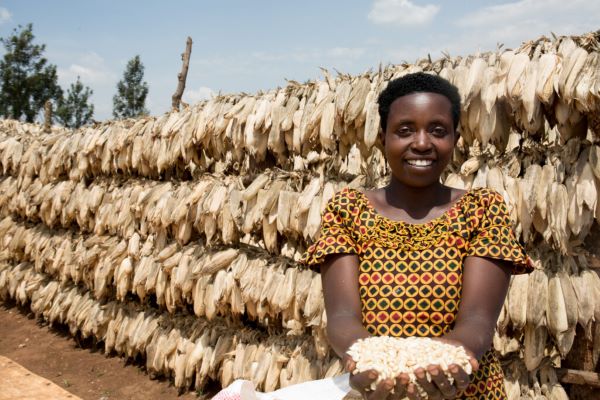The Season A harvest in Rwanda, which typically accounts for about 60 percent of Rwanda’s annual staple food production, began in December.
According to the US-based Famine Early Warning Systems Network (FEWS NET), the start of this important harvest will significantly improve household and market food availability relative to the lean season, despite some shortfalls in production totals.
“Key informants estimate the bean harvest will be about 10 to 15 percent below normal, due to the irregular October to December rains and the high cost of agricultural inputs, which reduced the use of quality inputs, planted acreage, and crop yields,” it said.
“However, maize production is expected to recover from the impact of erratic rains due to better end-of-season rainfall, sustaining average production. The start of the Season A harvest and recent improvements in cross-border trade – which is due to improving bilateral relationships with Uganda and Burundi – are increasing food availability in rural areas and are expected to temporarily stabilise staple food prices.”
FEWS NET added; “However, food prices remain atypically high overall due to below-average local and regional production and increased regional competition for supplies.”
According to Rwanda’s National Institute of Statistics of Rwanda (NISR), the rural Consumer Price Index (CPI) for food and non-alcoholic beverages rose by 43 percent at the peak of the lean season in November compared to the same time last year and by 1.3 percent compared to October 2022.
“Amid high food inflation, the significant contribution of the Season A harvest to rural households’ annual food needs will be the main factor driving improvement from current Stressed (IPC Phase 2) outcomes to Minimal (IPC Phase 1) outcomes after December, including in the districts in Western (Ngororero, Nyabihu, and Rutsiro) and Southern (Ruhang) provinces that were previously affected by low harvests in past seasons and restricted cross-border trade,” FEWS NET said.
It added that although income for households working in the industrial, service, and tourism sectors remains average, the sustained, high cost of food and non-food items (including fuel and transportation) is placing pressure on household purchasing power.
According to the NISR, November’s urban CPI for food and non-alcoholic beverages rose by 22 percent over the past year and one percent over the past month.
“Food prices are expected to remain high in early 2023, and the economic challenges occasioned by the Russia-Ukraine conflict, the unemployment rate of 17 percent, and the high cost of food will likely continue to limit access to food in 2023,” FEWS NET said.
“An estimated 127 000 refugees and asylees are expected to sustain Stressed! (IPC Phase 2!) outcomes as food price shocks continue diminishing the purchasing power of humanitarian cash transfers amid reduced rations due to funding shortfalls. Based on the latest WFP monthly food price monitoring report in October 2022, the price of the minimum food basket increased by 17 percent compared to the previous month and nearly doubled compared to October 2021.
“While some marginal improvement in food prices and purchasing power is likely during the harvest period, food prices will likely remain above average overall. As a result, the calibration of cash transfer values is essential to avoiding food consumption gaps among the refugee and asylee population,” it added.










[…] sides aim to work closely in developing suitable technologies and to transfer knowledge to farmers to increase farm productivity. Fast forward today, Rwanda is going to get a wine producing facility for its grape harvest that […]
Comments are closed.